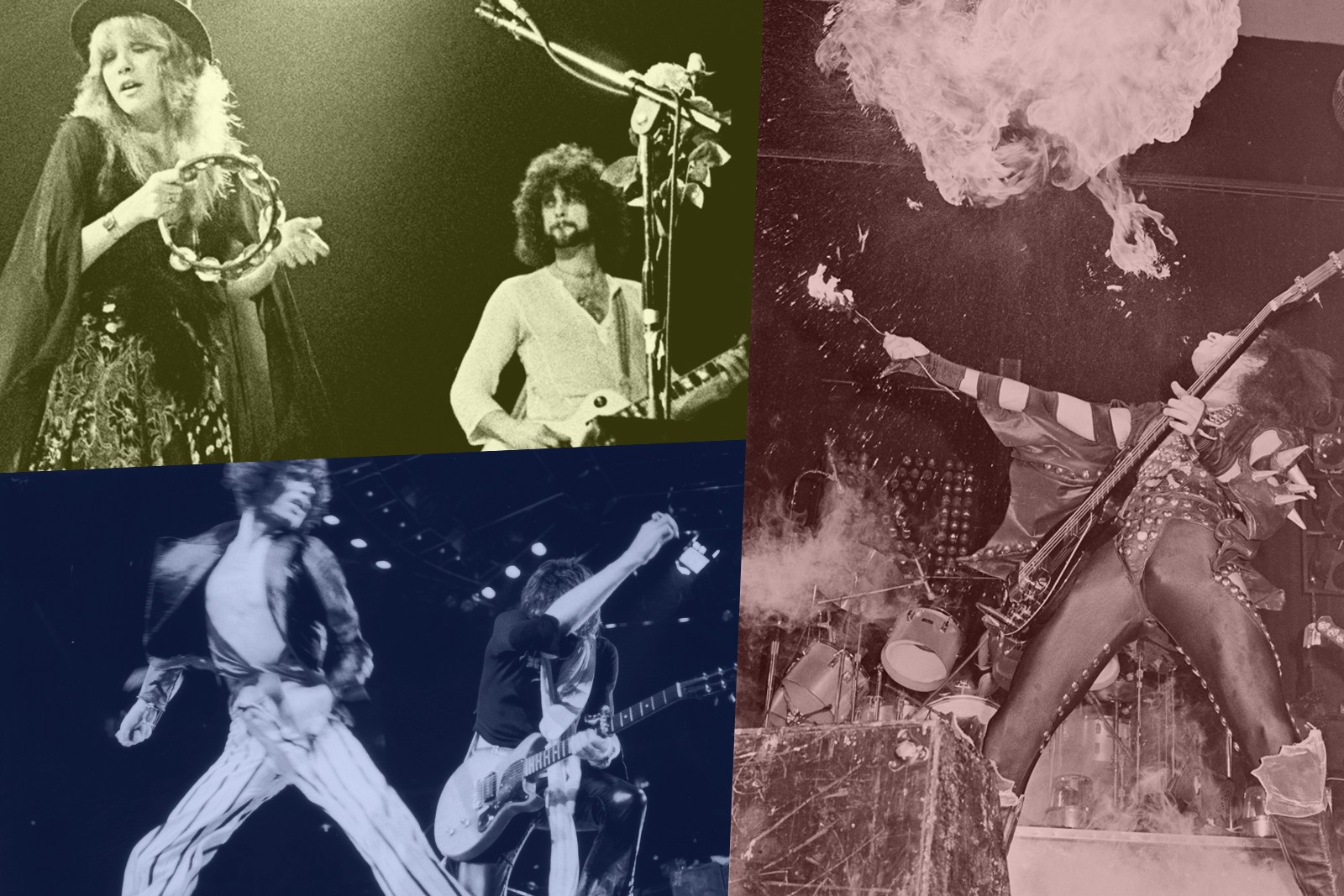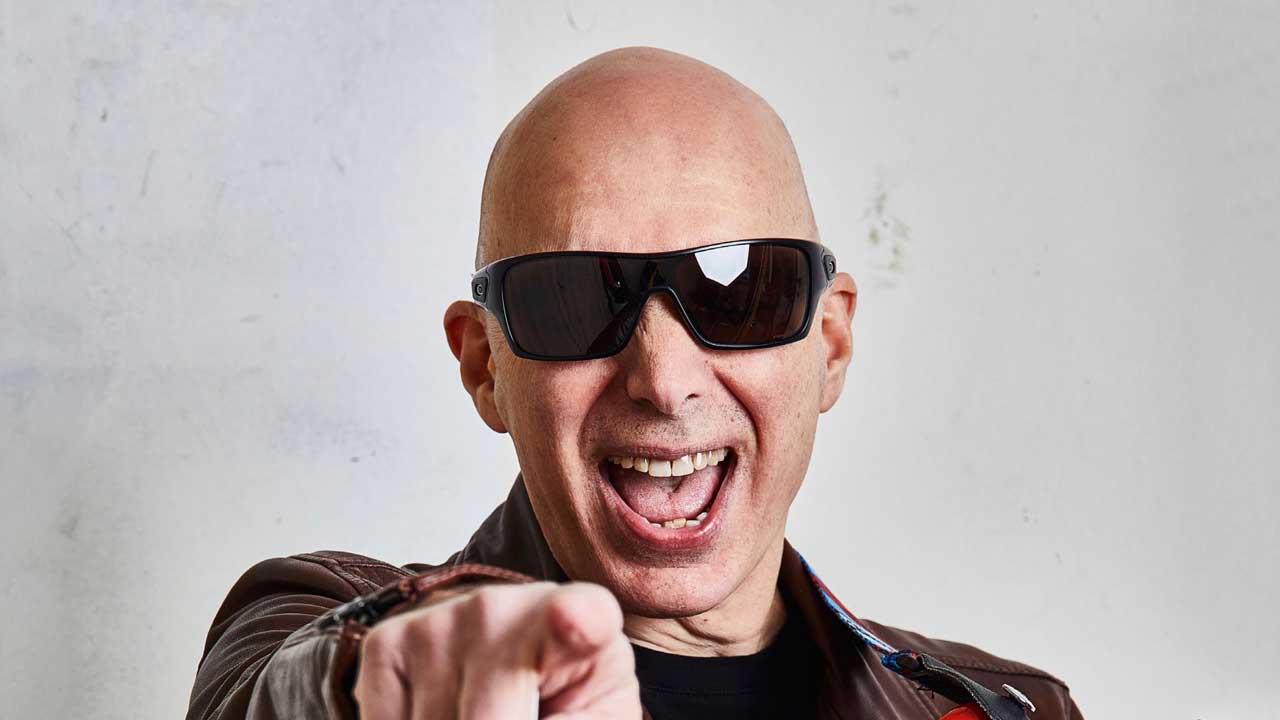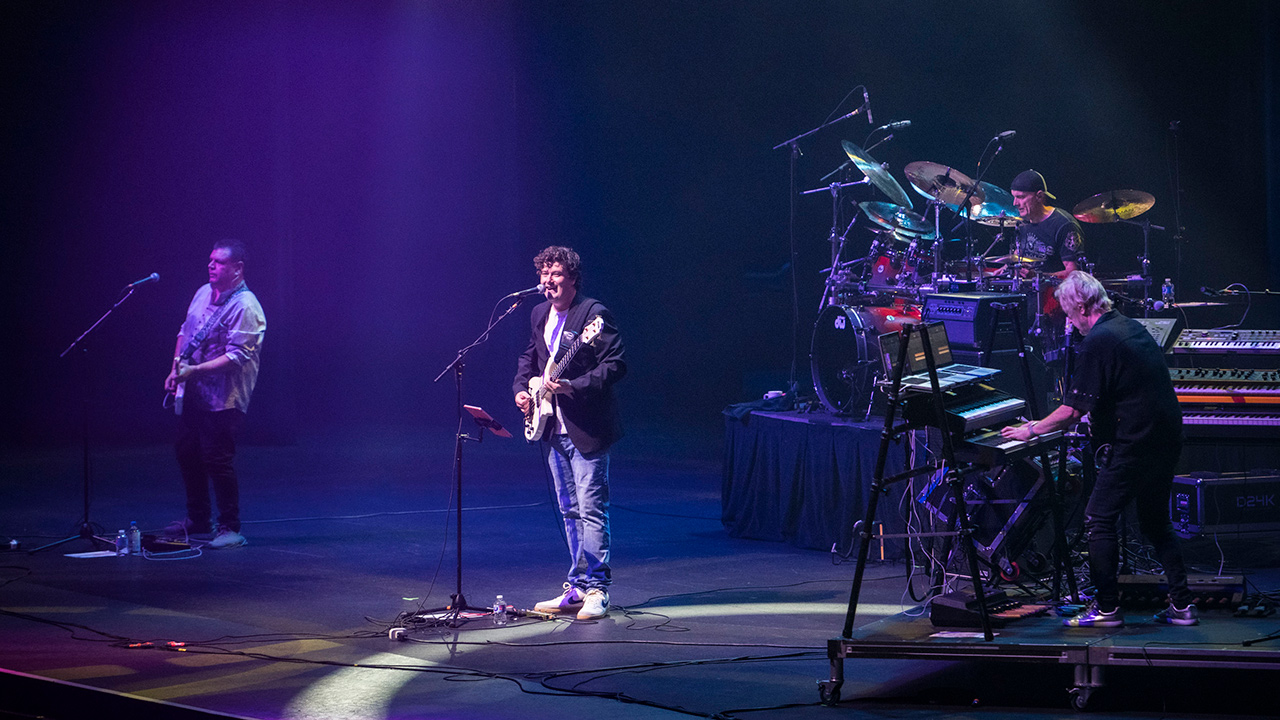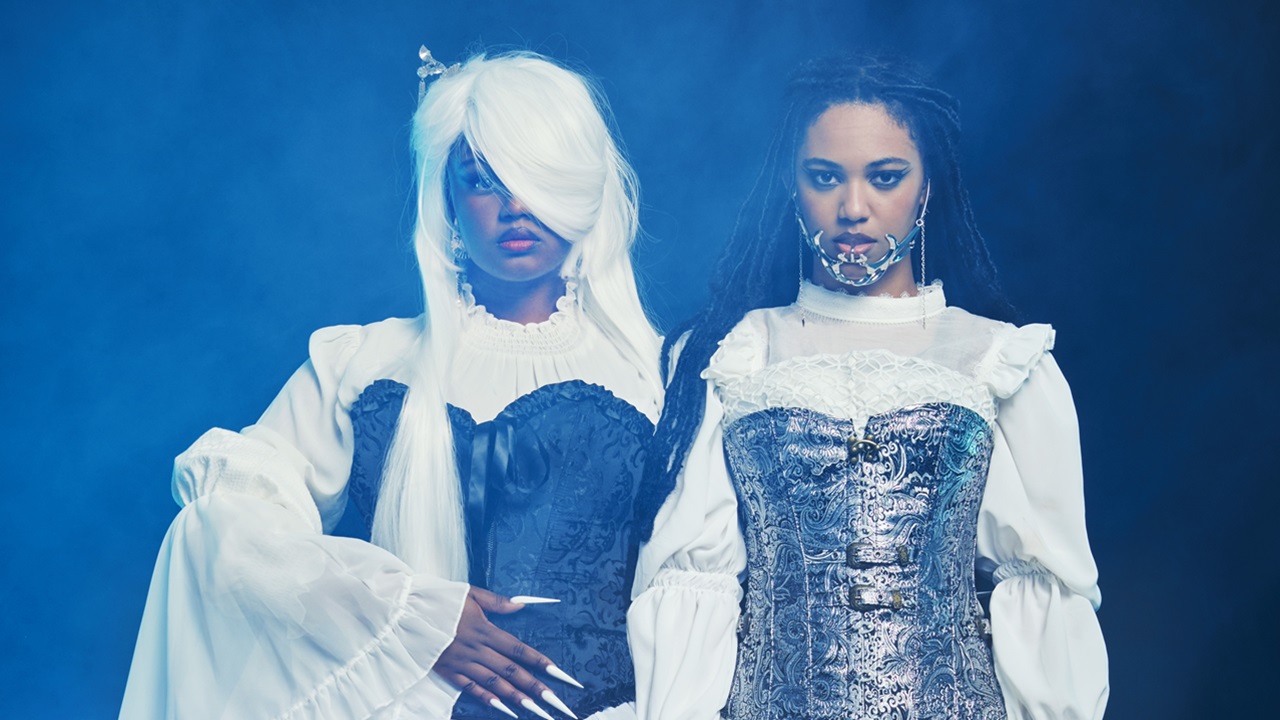The year 1975 was pivotal for classic rock, as some of the genre’s most important artists ascended to superstar status and then celebrated with massively successful tours.
It wasn’t all flowers and victory laps, as still-rising acts such as Lynyrd Skynyrd and Rush were forced to pay their dues with grueling, creatively draining treks that they nicknamed “the torture tour” or the “down the tubes tour.”
Below you’ll find the stories behind the 18 most important rock tours of 1975, along with the details on how you can best revisit each one via live albums, concert films or fan-shot bootlegs:
Lynyrd Skynyrd: The ‘Torture Tour’
Constant touring and session work made 1975 a very difficult year for Lynyrd Skynyrd. Founding drummer Bob Burns left before the band recorded Nuthin’ Fancy, which they were reportedly forced to complete in less than three weeks due to confirmed tour dates. They played over 120 shows on what they nicknamed “the torture tour,” but guitarist Ed King quit after getting dressed down by Ronnie Van Zant following a less-than-stellar show in Pittsburgh. Despite exhaustion and various substance abuse battles, the remaining group made it to the finish line in mid-November. They then went straight to the studio and were back on the road touring behind Gimme Back My Bullets in less than a month.
READ MORE: 1985’s 15 Hottest Rock Tours
Rush: ‘Fly By Night’ and ‘Caress of Steel’ Tours
With Neil Peart aboard as drummer and lyricist, Rush began 1975 by releasing their second album, Fly By Night, which found them expanding their sound and delving into prog-rock with the nine-minute “By-Tor and the Snow Dog.” After playing 106 shows in support of that album, they went even further into prog with September’s Caress of Steel, which was dominated by two massive song suites. The album wasn’t initially received very warmly, which wound up hurting ticket sales and led to the band nicknaming the trek the “down the tubes” tour. Of course, they stuck to their guns and rebounded strongly with 1976’s 2112.
AC/DC: ‘High Voltage’ and ‘T.N.T.’ Tours
AC/DC played 174 shows in 1975 without leaving their home country of Australia, touring in support of the High Voltage and T.N.T. albums. Some very important puzzle pieces fell into place for the band before the tour. In mid-1974, Malcolm Young switched to full-time rhythm guitar duties, and in October of that same year, Bon Scott took over as their lead singer. The band would conquer the United Kingdom in 1976, and mounted their first American tour in 1977.
Led Zeppelin: 1975 North American Tour
After taking an unprecedented 18 months off the road, Led Zeppelin returned to North America a bit beat up. Guitarist Jimmy Page suffered a broken finger, forcing him to adapt a three-fingered playing style for much of the tour. A few days before the opening date on Jan. 18 in Bloomington, Minnesota, frontman Robert Plant came down with a nasty flu that pestered him for much of the trek. But the band gamely soldiered on – and eventually caught fire.
Eagles: One of These Nights Tour
Eagles shifted further away from country towards a more mainstream rock sound on 1975’s One of These Nights, and the change made them chart-topping superstars. They capitalized with an 84-date that found them headlining arenas and stadiums. The tour also marked the end of an era, as guitarist Bernie Leadon, dissatisfied with the group’s new sound and his reduced role in their songwriting, departed the Eagles at year’s end. Luckily, the band had Joe Walsh’s phone number.
Alice Cooper: Welcome to My Nightmare Tour
With the original Alice Cooper group disbanded, Vincent Furnier became Alice Cooper the solo artist with 1975’s Welcome to My Nightmare. He launched a highly theatrical and choreographed tour of the same name on March 21 of that year, complete with spiders, demons and a giant cyclops. The tour was captured in a concert film, which was released in 1976.
Pink Floyd: Wish You Were Here Tour
Pink Floyd was not confined by traditional album or touring plans. Their 29-date Wish You Were Here tour began April 8, 1975 and concluded July 5, two months before their album of the same name was released. They’d already been playing early versions of songs from Wish You Were Here and 1977’s Animals on their 1974 tour, and did so again on this trek along with a full performance of The Dark Side of the Moon.
Fleetwood Mac: Stevie Nicks and Lindsey Buckingham
Eight years and 10 albums after their formation, Fleetwood Mac assembled the lineup that would make them superstars by adding Stevie Nicks and Lindsey Buckingham for their 1975 self-titled album. They played 120 shows in support of the record over the next year in a half, mixing in Fleetwood Mac hits such as “Rihannon,” “Say You Love Me” and “Landslide” along with songs from their back catalog and a couple of tracks from 1973’s Buckingham Nicks album. In 2017, the group released an expanded edition of the Fleetwood Mac album complete with a disc full of live material from the tour.
Led Zeppelin: Earl’s Court
Two months after the conclusion of their initially snake-bitten but ultimately successful North American tour, Led Zeppelin reached what may have been a career peak in live performances during a five-night stand at Earl’s Court in London. No expense was spared to pack the venue with state-of-the-art audio and visual systems, to present the band in the best setting possible. Led Zeppelin responded with some of their most dynamic and powerful shows, bringing back a mid-show acoustic set and stretching each show out past three hours. Some footage from this show can be seen in the 2003 Led Zeppelin live video compilation.
Genesis: The Lamb Lies Down on Broadway Tour
Peter Gabriel‘s last tour with Genesis found the band throwing audiences straight into the deep end with a full-album performance of their ambitious 1974 concept album The Lamb Lies Down on Broadway, complete with elaborate visual staging and multiple costume changes by the singer. A complete audio recording of the tour’s L.A. stop was included on 2024’s expanded reissue of the album.
Rolling Stones: Tour of the Americas ’75
Ron Wood‘s first tour with the Rolling Stones began on the back of a flatbed truck, as the group performed “Brown Sugar” live on May 1 in New York City to announce their upcoming North American dates. After a pair of warm-up dates at LSU, the tour kicked off in San Antonio on June 3. It featured an upgraded stage show, including the now infamous inflatable penis Mick Jagger would ride around onstage. A few songs from the tour were included on 1977’s Love You Live, and the band’s July 12, 1975 show at the L.A. Forum was released as a live album and home video in 2014.
Bruce Springsteen: Born to Run Tour
After previewing songs from the album in concert as far back as 1974, Bruce Springsteen released his long-gestating masterpiece Born to Run in August of 1975. The proper tour for the album began a month before and found Springsteen quickly ascending to superstardom: this is the year when he appeared on the covers of both Time and Newsweek the same week. Several shows from the tours were heavily bootlegged and a 2005 reissue of the album came complete with a concert film of the group’s Nov. 18, 1975 show at London’s Hammersmith Odeon.
Paul McCartney and Wings: Wings Over the World Tour
Paul McCartney returned to North American stages for the first time since the Beatles‘ 1966 tour in 1975 with the Wings Over the World Tour. Launched that September and continuing until October 1976, the tour was reportedly attended by over one million people at 65 arena and stadium shows across the globe. The tour was captured on the 1976 triple-live album Wings Over America, on the 1979 television documentary Wings Over the World and in the 1980 concert movie Rockshow.
Kiss: Hotter than Hell, Dressed to Kill and Alive! Tour
Kiss was in near-constant motion in 1975, playing 133 dates on tours in support of 1974’s Hotter than Hell, March 1975’s Dressed to Kill and September’s big commercial breakthrough Alive!, a risky double-live album that made them superstars. “After the release of Alive!, things felt different,” Paul Stanley said in his 2014 book Face the Music. “It was like watching water simmer before it boils. It suddenly seemed like just a matter of time before things would explode.” Several shows from this era are included on the Kissology Volume One: 1974-1977 home video collection.
Elton John: Rock of the Westies Tour
Elton John kicked off his 1975 tour by returning to the tiny venue where he first began winning American audiences over in 1970, performing 5 shows in three nights at the Troubadour. The 19-date tour quickly shifted to stadiums, culminating in John’s famous two-night stand at Los Angeles’ Dodger Stadium. He returned to the venue in 2022 for the final American stop of his Farewell Yellow Brick Road tour.
The Who: The Who by Numbers Tour
Keith Moon‘s onstage career with the Who came to a tumultuous end with the 1975-1976 The Who by Numbers tour, which saw the addiction-battling drummer collapse two songs in the band’s March 9, 1976 show at the Boston Garden, nearly bleed to death after kicking a picture frame the next day and spend over a week in the hospital after an August 1976 show in Miami. The band finished the tour, but Moon died shortly after the release of their next studio album, 1978’s Who Are You. A live concert movie from the tour’s Nov. 20, 1975 concert in Houston was released in 2012 as The Who Live in Texas ’75.
Bob Dylan: Rolling Thunder Revue
In an attempt to connect with concert-goers more intimately (while wearing Kiss-inspired makeup), Bob Dylan launched the Rolling Thunder Revue on Oct. 30, 1975, playing smaller venues in secondary markets along with a rotating cast of co-stars that included Joan Baez, Joni Mitchell and Roger McGuinn. The famed 57-date tour was chronicled with the 10-disc The Rolling Thunder Revue: The 1975 Live Recordings box set and in the documentary Rolling Thunder Revue: A Bob Dylan Story By Martin Scorsese, which were both released in 2019.
Queen: A Night at the Opera Tour
Like Kiss, Bruce Springsteen and Fleetwood Mac, Queen released their big commercial breakthrough, A Night at the Opera, in 1975. They capitalized with a 77-date tour that spanned from November 1975 to April 1976, and featured the live debut of their classic song “Bohemian Rhapsody.” The tour’s Christmas Eve show at London’s Hammersmith Odeon was released in 2012 as the Queen: A Night at the Odeon – Hammersmith 1975 live DVD.
46 Farewell Tours: When Rock Stars Said Goodbye
They said it was the end, but it wasn’t really.
Gallery Credit: Matt Wardlaw















